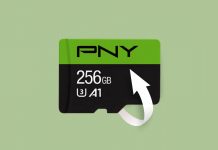 Formatting is often regarded as the solution to fix many problems relating to SD cards and other forms of storage media. After all, it’s basically a factory reset for your SD card. But, what are you supposed to do if the process of formatting is what’s giving you grief?
Formatting is often regarded as the solution to fix many problems relating to SD cards and other forms of storage media. After all, it’s basically a factory reset for your SD card. But, what are you supposed to do if the process of formatting is what’s giving you grief?
If your SD card won’t format, there are a few telling signs that could point towards why this is happening. In this article, we’ll look at the causes and fixes behind why your SD card won’t format.
What Prevents an SD Card From Being Formatted
Before we discuss how to fix your SD card, let’s look at a few reasons why Windows can’t format the SD card all the time:
| Reason | Description |
| ✂️ Logical corruption | Severe corruption can manifest itself in many ways. One such possibility is that your SD card is so corrupted that the standard process of formatting just won’t cut it. |
| 🦠 Virus infection | Malware can do a number of devious things to your SD card. If your SD card has been infected with a virus, it can prevent you from performing certain actions, like formatting. |
| 📂 File system error | File system errors can appear as a result of improper device removal. Removing your device before ejecting safely can cause the file system to become damaged, resulting in the SD card not working properly. |
| 💾 Faulty hardware | If your SD card has been physically damaged, it may prevent you from formatting it. The same is true for a faulty SD card reader or SD card slot. Consider testing the card in another reader to confirm. |
Now that you’re aware of the causes behind an SD card failing to format, the next section will show you how you can recover your data from the SD card to ensure it’s protected when we finally get to fixing it.
How to Recover Data From an SD Card That Won’t Format
If you’re unable to format the SD card, chances are it’s in a vulnerable state. Therefore, before you implement a fix, you should recover what data you can from the SD card to avoid accidentally deleting it.
Disk Drill is a data recovery tool that we’ll use to make a copy of the SD card’s contents for recovery. Recovering data from a copy of the SD card further reduces the chances of data loss, as you won’t be working on the actual card.
- Download and install Disk Drill.
- Connect your SD card, then click Drive Backup.
- Select your SD card, then click Byte-to-byte Backup.

- Name the backup, choose where you want to store it, then click OK.
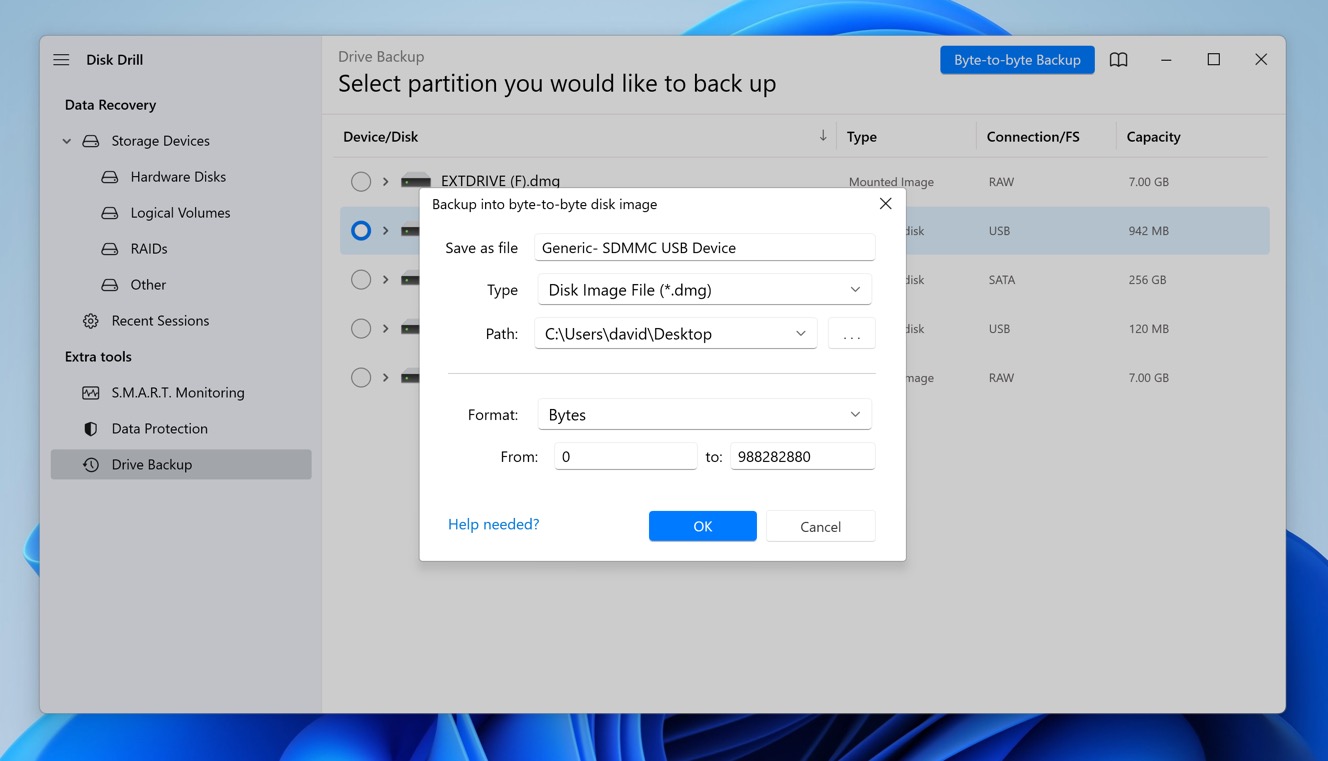
- Wait for backup to finsh and click Done. Then, go back to the Data Recovery section.
- Click Attach disk image, then choose the image file we just created. While it’s selected, click Search for lost data.
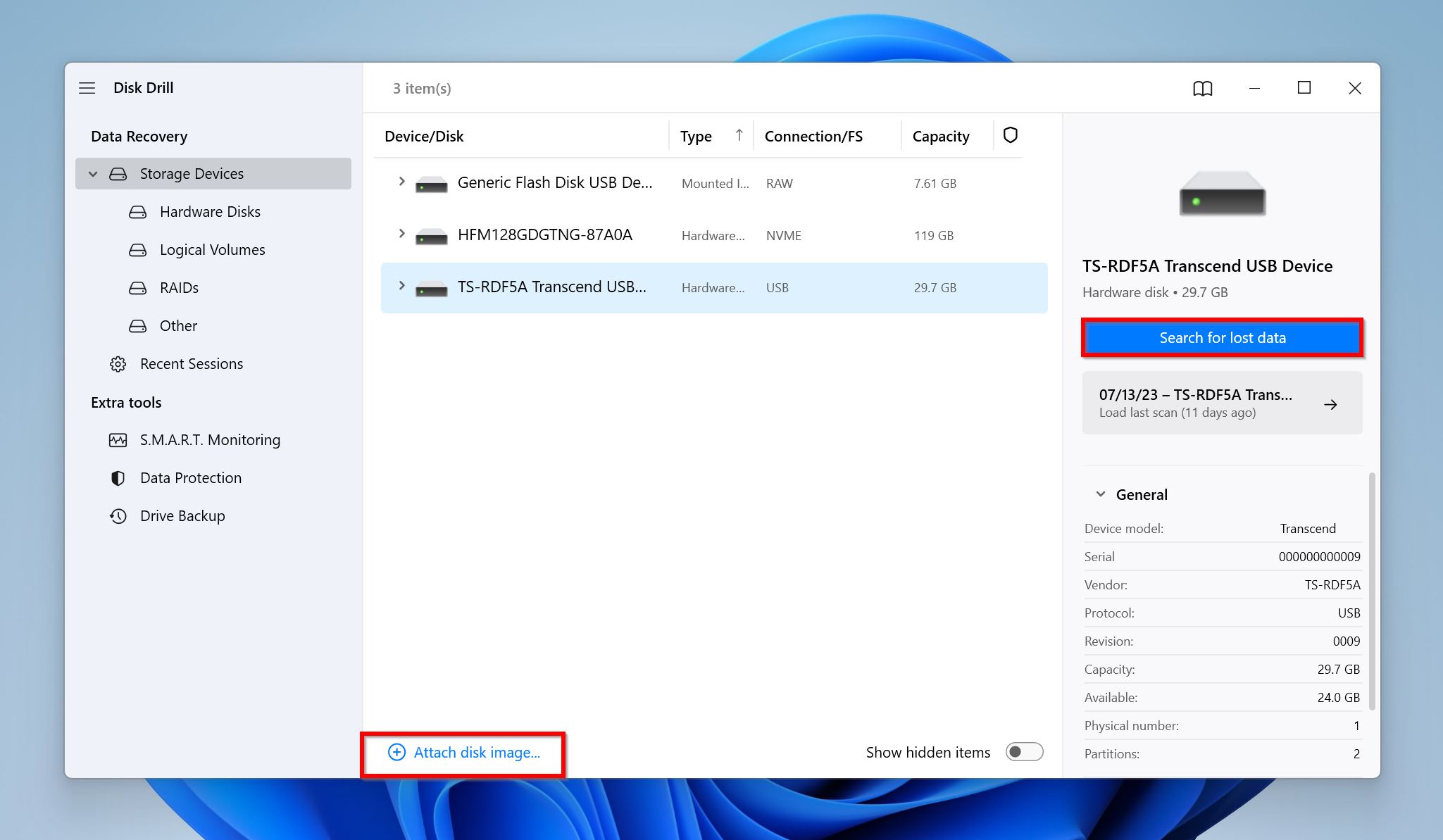
- Click Review found items.
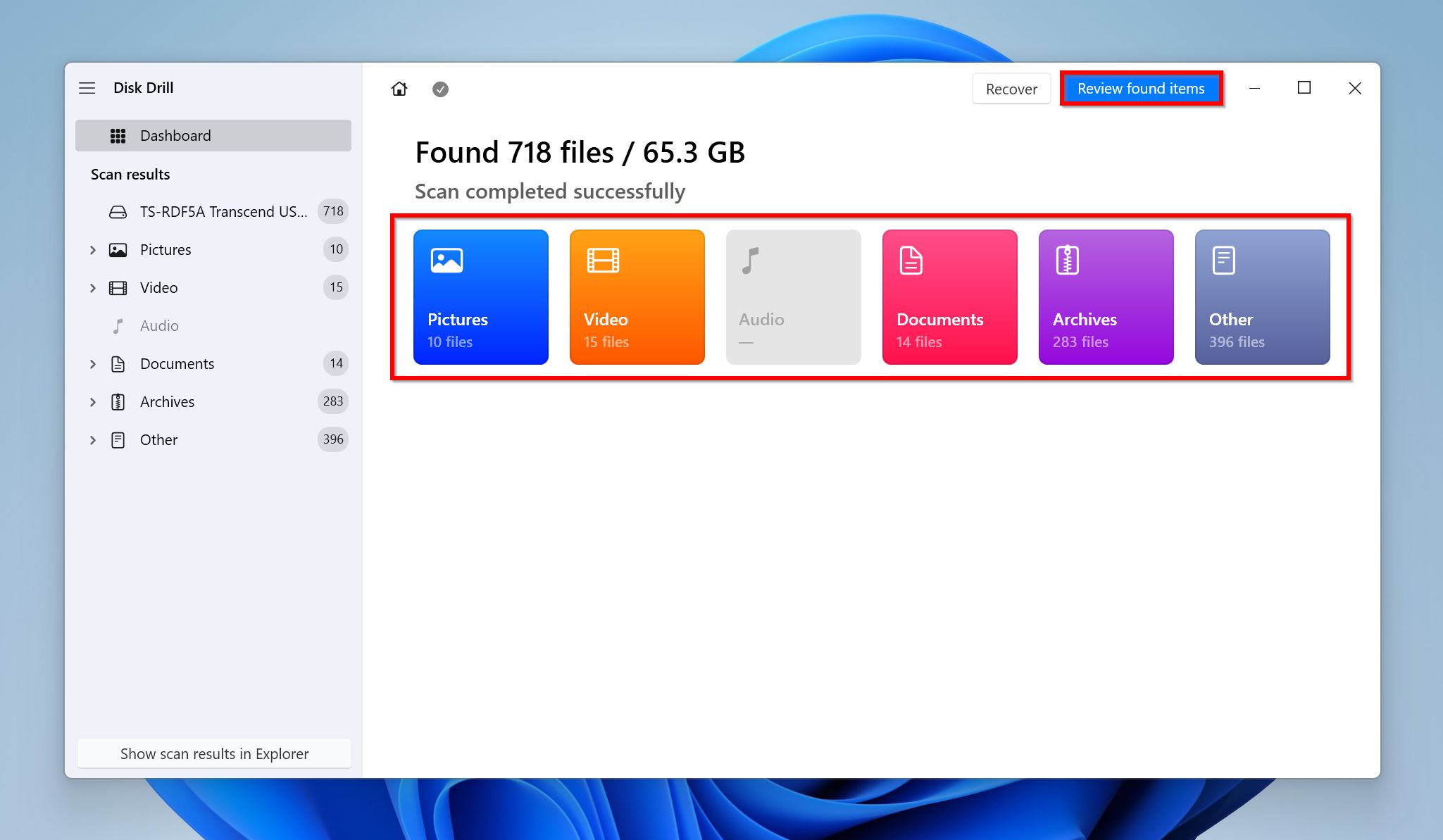
- Select the files you want to recover from the SD card. The preview panel can be used to see what the file contains, and the Recovery chances column is useful for seeing your chances of recovering each file. When ready, click Recover.

- Choose where you want to store the recovered files. Click Next.
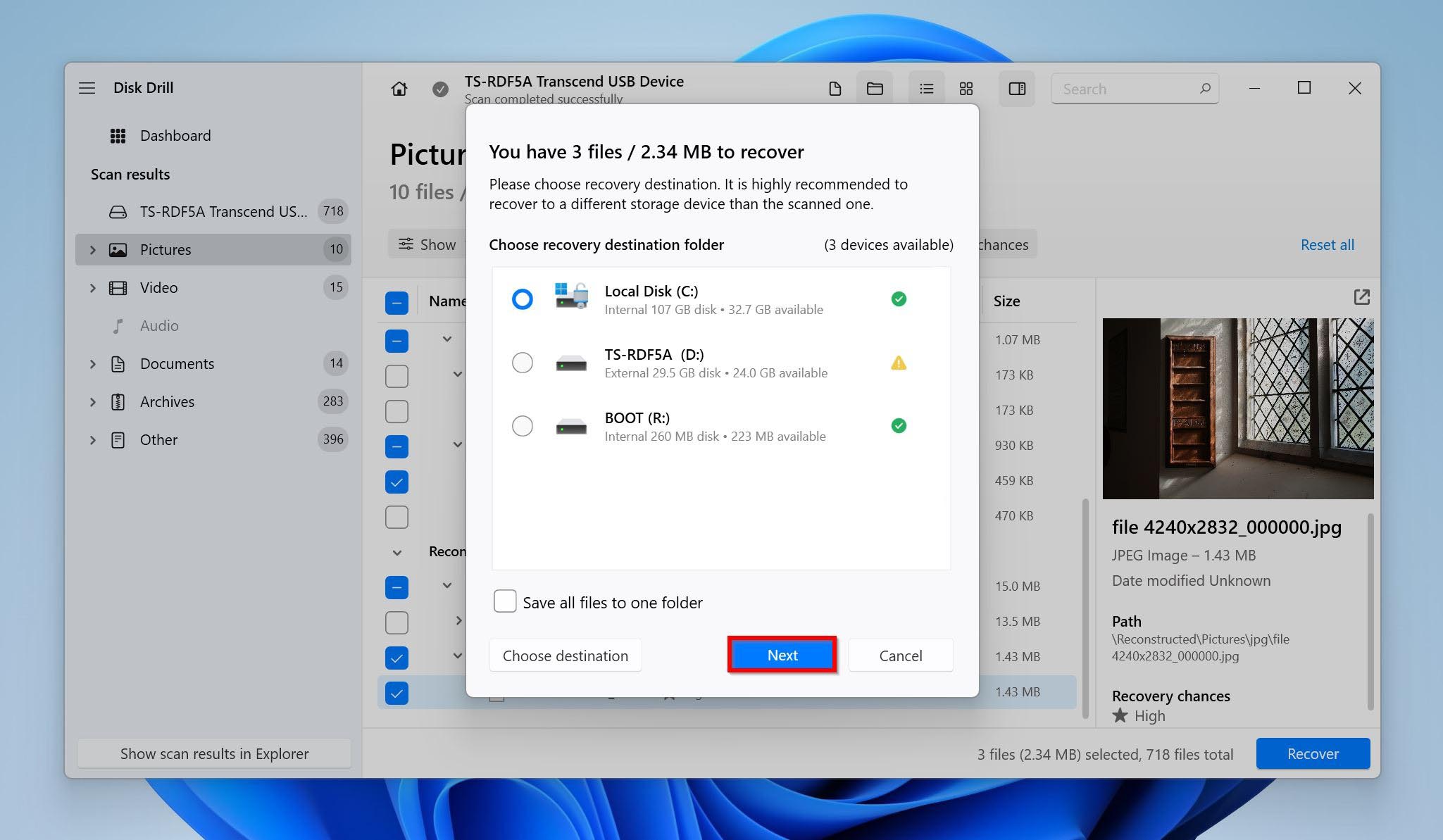
How To Fix an SD Card That Won’t Format
Now that your data is safe and sound, let’s look at various solutions you can use to fix your SD card that won’t format.
Solution 1:Try Another Computer or Device
As soon as your data is safe, the first thing you should do is isolate the problem. When Windows can’t format an SD card, there’s no indication whether the problem resides with the SD card, the SD card slot, or the computer itself.
Try formatting the SD card in another device to see if the problem persists. For instance, if your camera won’t format the SD card, maybe you’ll have more luck doing it on a computer or mobile device. This way, you can quickly confirm where the problem resides.
Solution 2:Unlock Write Protection
It’s common for SD cards to include a write-lock switch on the side. When enabled, this switch prevents any write actions from being performed on the card to protect it from things like accidental deletion. Therefore, you should remove SD card write protection by ensuring the switch is in the up position instead of down.
Since formatting the SD card involves writing a new file system (or refreshing the existing one), make sure this lock is disabled to complete formatting.
Solution 3:Change the Drive Letter
Windows has always worked with drive letters. It may seem unusual, but changing the existing drive letter attached to your SD card has a chance of fixing your problem. The same is true if a drive letter hasn’t been assigned to your SD card automatically.
Follow these steps to change or add a drive letter to your SD card:
- Right-click Start and click Disk Management.

- Right-click the partition of the SD card, then click Change Drive Letter and Paths.

- Select the existing drive letter and click Change. If there is no drive letter, click Add instead.

- Select a drive letter from the dropdown list, then click OK, then OK again.

Solution 4:Fix With CheckDisk
If Windows continues to tell you that your SD card cannot be formatted, it’s time to try fixing the file system associated with it. A damaged file system can cause a number of problems, and fixing it using CheckDisk may be enough to get it sorted.
Here’s how you can use CheckDisk to repair your SD card’s file system:
- Right-click Start and select Windows PowerShell (Admin).

- Type
chkdsk D: /f /r. Replace D: with your own drive letter. Press Enter.
Solution 5:Scan and Remove Viruses
Viruses are always a huge pain to deal with. If your SD card has been unfortunate enough to contract a virus, you need to scan and remove the virus to restore proper functionality.
These steps will show you how to scan for viruses using Windows Defender:
- Press Windows Key + S and search Windows Security. Open the first result.
- Click Virus & threat protection.

- Click Scan options and select Full scan. Click Scan now.
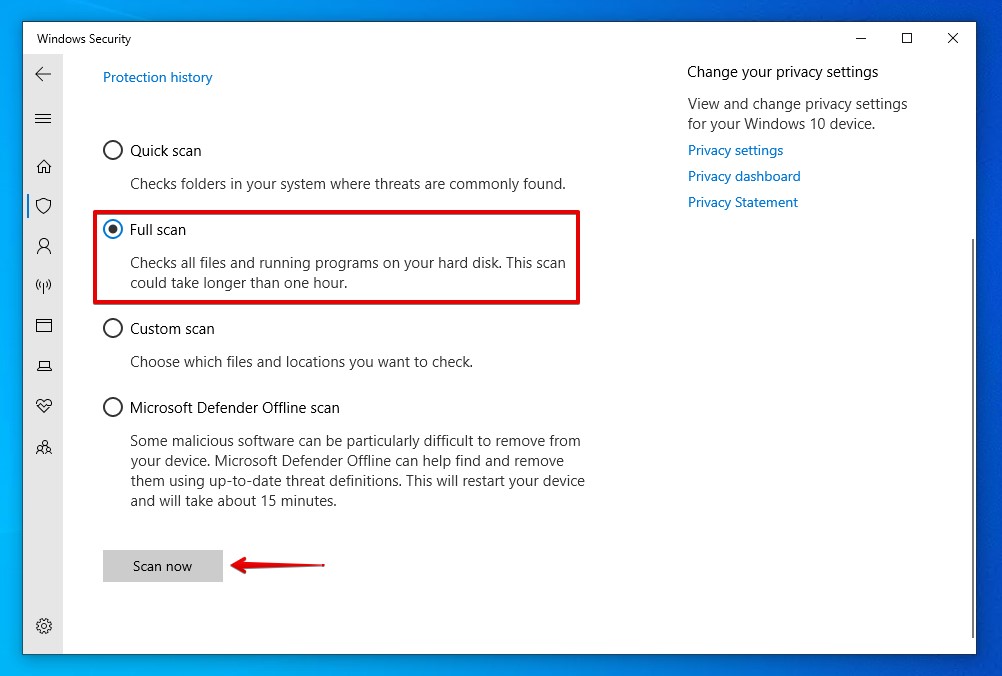
Solution 6:Clean SD Card With Diskpart
Finally, if Windows was still unable to format the SD card, you can run the clean command on your SD card using Diskpart. The clean command goes across every sector of the SD card and replaces it with zeros, essentially deleting all data on the card.
Here’s how you can clean your SD card using Diskpart:
- Right-click Start and select Windows PowerShell (Admin).

- Type
diskpartand press Enter.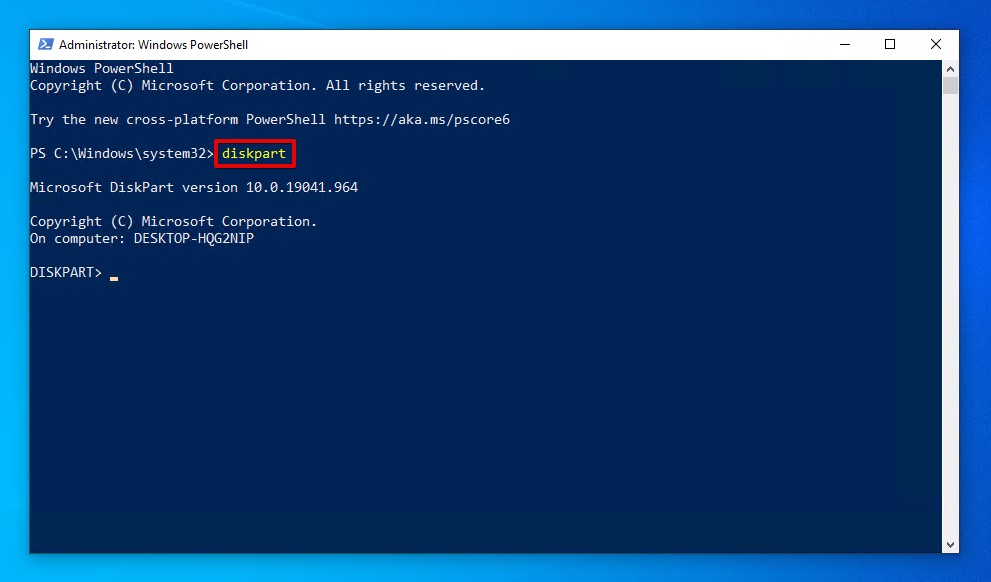
- Type
list disk. Make note of your disk number.
- Type
select disk 1. Replace the 1 with your own disk number. Press Enter.
- Type
clean all. Press Enter.
- Once cleaned, format the SD card with a file system.
Solution 7:Remove Read-Only Attribute
Since formatting involves rewriting your file system, having your SD card in read-only mode might impede the process. In this case, use Diskpart to remove the read-only attribute of your SD card by doing the following steps:
- First, open Command Prompt as an Administrator by pressing ⊞ Win + X and selecting “Command Prompt (Admin)” from the menu that appears. For Windows 11, the option might be labeled “Windows Terminal (Admin).”
- In the Command Prompt window, type
diskpartand press Enter.
- Next, type
list diskand press Enter. This will display the list of all available disks on your computer. Take note of the disk number of your SD card.
- After that, type
select disk x, where “x” is the disk number of your memory card. Then, press Enter.
- Now, type
attributes disk clear readonlyand press Enter to attempt clearing the read-only attribute of your SD card.
- Finally, type
exitonce the process is done to exit Diskpart.
If Diskpart successfully removes the read-only attribute of your SD card, you can now proceed to try formatting your device again.
Solution 8:Format Using Disk Management
Disk Management can also help you fix an SD card that won’t format by deleting and creating a new volume before formatting. Here’s how you can do it:
- To get started, press ⊞ Win + X and select Disk Management from the menu that appears.
- Disk Management will display a list of all the storage devices available. Right-click on your drive and select Delete Volume… if applicable. Then, press Yes to confirm.

- After deleting the volume, right-click on the unallocated space of your SD card and select New Simple Volume.

- Finally, follow on-screen prompts in the New Simple Volume Wizard. You can choose to format your SD card during this process as well.
Once the process is complete, you’ll see the newly formatted volume listed in Disk Management.
Solution 9:Format Using Third-Party Tool
SD Association also has their official SD Card Formatter tool that can often help you format a card you’re having trouble formatting using Windows’ built-in tools. Here’s a quick guide on how you can use this tool:
- Download the SD Card Formatter tool on SD Association’s website. Then, follow the instructions to install the app.
- Connect your SD card to your computer. Next, launch the SD Card Formatter tool.
- After that, you should see a drop-down list of available SD cards. Select the SD card you want to format.

- Configure the Formatting options and the Volume label for your SD card, and click the Format button to start formatting your memory card.

Conclusion
Facing an issue where your SD card won’t format feels like a task best left to professionals. However, there are methods you can do to fix the problem by yourself. But first, you have to understand what is causing your issue: SD card corruption, virus infection, file system error, or faulty hardware.
Once you understand the possible reason why your SD card won’t format, safeguard your files before proceeding to perform any fix. You can backup your file using your preferred software or cloud storage. For corrupted or inaccessible cards, use reliable data recovery tools like Disk Drill to recover your files. Once your files are safe, you can try out methods relating to the reason why your SD card won’t format.
You can try another computer or device, unlock the write-protection switch of your card, change the drive letter, use Command Prompt tools like CHKDSK or Diskpart, scan for viruses before formatting, format using Disk Management, or use SD Association’s SD Card Formatter tool. After fixing your device, you can try to format it again if you haven’t already done so.
FAQ:
- Right-click Start and select Windows PowerShell (Admin).
- Type diskpart and press Enter.
- Type list disk. Note the disk number associated with your SD card.
- Type select disk 0. Replace the 0 with your disk number and press Enter.
- Type clean all and press Enter.


